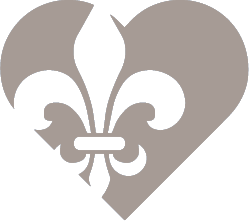Organ and tissue donation
THE LIVE SAVING GIFTS OF ORGAN AND TISSUE DONATION
While the opportunity for organ donation is extremely rare (less than 2% of the population will be a candidate), practically everyone has the opportunity to save lives through tissue donation.
One Organ Donor Can Save Up to 8 Lives
Donation after Brain Death
Most people become organ donors as the result of brain death following a traumatic brain injury (stroke, aneurysm, or a severe head injury). Only a physician can determine brain death, and it is done so after thorough evaluation in which specialized testing is done. Because there is no brain activity and the patient cannot breathe on his or her own, the body is supported by artificial means, such as a ventilator.
Donation after Circulatory Death
Donation can also occur when a patient is dependent on extensive medical support and there is no hope for a meaningful recovery. Families may make the difficult decision to remove life support with the understanding their loved one will die. When medical treatments are withdrawn and the heart stops beating (circulatory death) a doctor will pronounce that death has occurred. It is at this time that organ, tissue and eye donation may occur.
One Tissue Donor Can Save Up to 75 Lives
Tissue donation offers a second chance for recipients to have full and productive lives. Tissues recovered for transplant include cornea or whole eye, heart valves, bone, ligaments and tendons, veins, skin and bone marrow/vertebral bodies.
“There are no age restrictions for someone to become a donor.”
In fact, some of the tiniest donors can make the biggest impact as donation options for neonates are increasing. New research donation options include gestational ages as early as third trimester and a variety of birth defects such as anencephaly and other rare disorders. Donation, whether for transplant or research, can help a child have a lasting legacy, and add an extra layer of meaning to their brief life.
One Eye Donor Can Restore Sight to 2 People
There are three eye banks that serve Louisiana.
Baton Rouge Regional Eye Bank | Lions Eye Institute for Transplant & Research | Southern Eye Bank

“ONE SELFLESS ACT CREATES ENDLESS RIPPLES”
RESEARCH & ANATOMICAL DONATIONS
In addition to those waiting for organ and tissue transplants, there’s another waiting list—one comprised of millions of people waiting for medical breakthroughs that will lead to treatment and cures for illnesses afflicting them and their loved ones.
When an organ is not suitable for transplant, our dedicated research team search for medical research partners who can use the gifts for the advancement of medical treatments, therapies and education. We only work with companies who share our core values and treat the donated gifts with the utmost respect for the donor. Some of the companies we partner with include: IIAM, NDRI, Promethera, Bio-Aesthetics, AnaBios, OSSIUM, and LaCell. We also work with hospitals and medical schools such as Tulane University School of Medicine and Children's Hospital.
Research Innovation
The heart is used in drug discovery and safety
The pancreas is studied to try to prevent and reverse Type 1 Diabetes (check out episode 80 of The Gifted Life Podcast)
The liver is used to study how the body processes new drug therapies, and the intestine can show researchers how they will be absorbed
Areolas to study if the tissue can become a transplantable graft for patients needing breast reconstruction due to mastectomy (check out episodes 104 and 156 of The Gifted Life Podcast)
Ovaries can be used for the study of infertility treatments and ovarian cancer
Skin is being used in studies for drug absorption and psoriasis treatment
Bone marrow can be extracted from the vertebrae (vertebral bodies) for discovery in banking bone marrow for future use. Bone marrow can be used to treat blood cancer, improve organ transplants and repair damage caused from radiation. (check out episode 114 of The Gifted Life Podcast)
Neonatal Donation
Neonatal donation creates a way for parents to establish a legacy for an infant whose life will be brief. By requesting organ and tissue donation for their infant after they have passed away, parents are deciding to save and enhance the lives of others through transplant or through potentially lifesaving medical research.
Please browse the links below to learn more about some of the possibilities for neonatal donation, and some of the Tiny Heroes who are bringing meaning to the lives of many because their parents were passionate about impacting others’ lives.
If you have questions you would like to ask us, please email info@lopa.org





